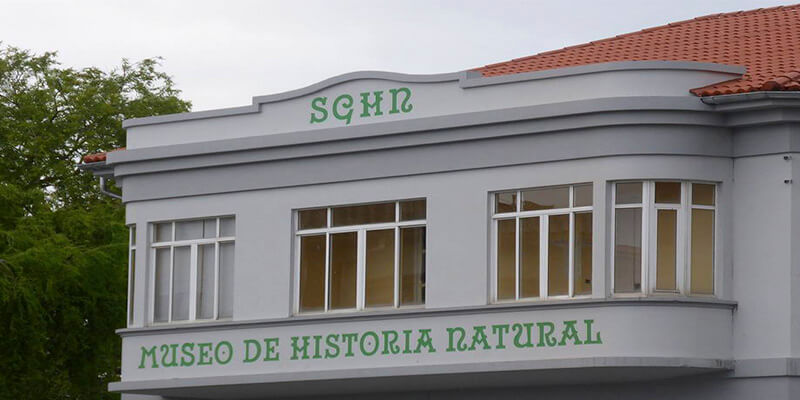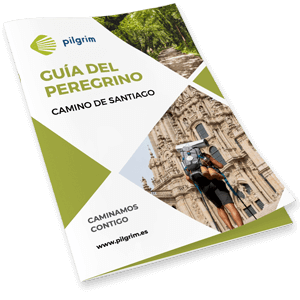Ferrol
‹ Back to the stage
Ferrol
- Residents: 69.452 aprox.
- Province: A Coruña
Information
Get to know Ferrol
The municipality of Ferrol has always been closely linked to the sea, however, it also has a close relationship with the Camino de Santiago since it is the point of arrival of many pilgrims by boat in order to undertake the road to the Apostle.
This city is the first stage of the English Way.
Location
How to get there
The easiest way to get to Ferrol is by road, the municipality is served by the AP-9 highway that connects with Vigo, the AG-64 highway that connects with Villalba and the national highway N-651.
It is also possible to reach the town by train and bus, there are daily train lines to Bilbao, Madrid, Barcelona, A Coruña and surroundings. The existing bus lines allow you to get from A Coruña, Santiago, Pontevedra, Fisterra, Ourense, Vigo, Cambados, Madrid, Gijón, Bilbao, Irún, Ponferrada, Astorga, Benavente, Zamora, Salamanca, Sevilla, Portugal, Germany, Belgium, France and Switzerland. These services are provided by Castromil-Monbus, Arriva, and Alsa.
History / Culture
What to see
Puerta del Dique
This well-known entrance to the Military Arsenal of Ferrol is of neoclassical style and was built and designed in 1765 by Julián Sánchez Bort, an architect who is credited with numerous works and constructions throughout the city.

Playa de Santa Comba
It is one of the most charming beaches of the municipality. The space is spread over just under one thousand five hundred meters long, being surrounded by unspoiled nature that gives it a unique aura. The sand is very fine and soft, so walk the beach from one end to another with bare feet is an unparalleled experience.
At one end of this sandy area is the hermitage of the same name, which can only be accessed at low tide.

Playa de San Jorge
It is located about ten kilometers from the city center, being the largest beach in the municipality. Compared to the other big beach of Ferrol, Doniños, this one is not so frequented so it is perfect for relaxing and taking a long walk along the shore.
It has an extension of 2100 meters long and 100 meters wide, increasing the available space exponentially when the tide goes out. Characteristic of this sandy area are its dunes full of native vegetation, some of which are protected by the environment due to their scarcity and environmental richness.

Playa de Ponzos
This rustic beach has a length of 1400 meters by 55 meters wide. Due to its location it is usually very windy, so it is not usually crowded and is a favorite of users of Kitesurfing and Windsurfing. It is also famous in the area for being one of the few nudist beaches that are still preserved in the city, being reserved a part for this purpose.

Playa de Esmelle
This sandy area is the continuation of the beach of San Jorge, being separated only by a small stream, the O Xuncal. Its accesses are very comfortable thanks to a nearby dirt parking lot and a long wooden walkway that facilitates the descent to the beach.
It is somewhat smaller than the previous one, specifically only 300 meters long by 100 wide. Being semi-protected from the Atlantic, it is usually less windy than neighboring beaches.

Playa de Doniños
On a high point of the marshes we can see a monument in honor of the sportsman Adolfo Ros, who lost his life rescuing several swimmers in distress in 1984 in the same place. Since then he has been honored both on the beach and in the half marathon or “volta á ría” that takes place every year in the Ferrolterra area.
With almost two kilometers long, it is one of the favorite beaches par excellence by surfers, sharing the available space with the rest of swimmers.

Hospital de la Caridad
This former charity hospital was designed by Dionisio Sanchez de Aguilera and built in 1783 thanks to the selfless donations of both neighbors and high officials.

Playa de A Fragata
This small but beautiful sandy area is only 200 meters long by 50 meters wide.
This small but beautiful sandy area is only 200 meters long by 50 meters wide.
It is a beach very frequented by the ferrolanos and the neighbors of the zone since it has very good facilities. Because of its geographical position there is usually enough waves, which is why many athletes come to these beaches for water sports such as kayaksurfing, windsurfing, surfing …
.

Sala de Armas del Arsenal Militar
The weapons room of the Ferrol Arsenal houses a historic-artistic ensemble of incredible value. The building, located next to the arcaded warehouses, was designed following the urban style of the city. It is worth noting the existence of a clear pattern that is repeated in all these constructions, both in the square and in the building itself.
In itself the building looks more like a palace and it is hard to imagine that it was built as a warehouse, it was sought to highlight and imply the great military power enjoyed by the city at that time.

Parque Reina Sofía y Museo de Aquaciencia
This beautiful park functions as the green lung of the city since its birth. It highlights the square known as ”dance floor” where outdoor concerts are held during the big festivals of Ferrol. Among the vegetation of the gardens is the Wallace Fountain, acquired in Paris in 1889, and several busts and sculptures.

Palacio de la Capitanía General
This building with a certain palatial character was initially designed as the headquarters of the Captaincy General of the Maritime Department, its construction coinciding with that of the city’s shipyards and the arsenal itself.

Nuestra Señora del Socorro
This neoclassical chapel located in the Ferrol dock began to be built during the eighteenth century, being extended the works until the early nineteenth century. It stands out for its altarpiece from 1813 and the images of Christ the Navigator and the Virgin of Succour. It is the chapel of reference of the sailors, from which important processions take place during Holy Week.
MASS TIMETABLE
From September 1 to June 30 Weekdays at 7:00 pm Vespers at 7:00 pm Holidays at 11:00 am and 12:30 pm
INFORMATION OF INTEREST
From September 1 to June 1.
Phone: 981 358 227

Museo Naval
It was inaugurated in 1986 and is located in the naval base of the city. It is located in the old building that housed the Presidio Barracks (San Campio), built in 1765 and right next to the EXPONAV museum and opposite the Canton de Molíns.

Museo de la Sociedad Gallega de Historia Natural
This peculiar museum is located since 2011 in a former military building. Its aim is to raise awareness of the importance of preserving ecosystems, showing special support for marine cetaceans.

Iglesia de San Francisco
It is a military church and depends on the Castrense archbishopric, which is based in Madrid. This beautiful and unique neoclassical building was built as a temple in the year 1757 where it was located in the convent of San Francisco, hence its current name. It highlights the altarpiece of the famous sculptor Xosé Ferreiro.
MASS HOURS
From September 15 to May 31 Weekdays at 11:30, 19:00 Vespers at 19:00 Holidays at 11:00 and 12:00 From June 1 to September 14 Weekdays at 11:30 and 20:30 Vespers at 20:30 Holidays at 12:00 and 20:30
INFORMATION OF INTEREST
E-mail: jvalzar@et.mde.es Telephone: 981 358 038

Fuente de San Roque
This beautiful fountain from 1784 was the work of Francisco Solini, Juan Andrés Pardiñas and the sculptor Carlos de Porto.

Fortaleza de San Felipe
Built in 1557 under the mandate of Philip II, from whom it takes its name, it is reformed on several occasions to improve the defense of the estuary. Between 1731 and 1755 considerable improvements were carried out, highlighting the construction of a hornabeque, the moat and the main gate.

Faro Cabo Prior
It is the place chosen by many nature lovers to watch the migration of numerous species of seabirds. The views are spectacular, being able to appreciate from the viewpoint the nearby lighthouse of A Frouxeira, in the town of Valdoviño, and on clear days you can even intuit the great Tower of Hercules in A Coruña and the city itself.

Faro Cabo Prioriño
Along with the lighthouse of Cape Prior, illuminates the ships entering the estuary of Ferrol by the Gulf of Ártabro since the nineteenth century. It is therefore an area of great historical and strategic importance, being located right there an interpretation center of the environment, which covers the military batteries and the entire area of the newly created outer harbor. In addition, a beautiful viewpoint and an ornithological observatory have been installed.

Exponav
National Shipbuilding Exhibition.
Inaugurated in 2008, it is the main maritime museum in Spain and one of the most complete in this field in Europe. It is dedicated entirely to shipbuilding in the world, focusing on the particularities of Spain and Ferrolterra.

Ermita de Santa Comba
There is evidence of its existence since 1110. From then on it underwent several remodeling works over the centuries until it reached its current configuration. It has only one nave with a simple belfry and a gabled roof, with access only to the chapel at low tide.

Ermita de Chamorro
It is said that in the seventeenth century, when a fisherman was looking for his boat lost at sea it began to agitate and the boat was about to sink. The fisherman shouted to the heavens, ”Stop, morro” a cry heard by the Virgin and caused the fisherman to be saved from drowning.

Meninas de Canido
If we walk through the upper district of Canido we can find some curious paintings representing the famous Meninas of Velázquez on the facades of almost every building.

Dársena de Curuxeiras
The Curuxeiras dock is accompanied by a beautiful promenade with palm trees and the well-known Ranita gardens, an area full of terraces and restaurants where you can relax while enjoying the views.
The Curuxeiras dock is accompanied by a beautiful promenade with palm trees and the well-known Ranita gardens, an area full of terraces and restaurants where you can relax while enjoying the views.

Concatedral de San Julián
It is really a co-cathedral, since it shares the cathedral title with that of Mondoñedo.
This temple dates from the last third of the 18th century and is the work of Julián Sánchez Bort, who based his work on the plans of the church of San Andrés Avelino in Rome. The main facade is formed by two superimposed bodies ending in a triangular pediment on which rises a cross.

Cantón de Molíns
This historic alameda is said to be one of the first green areas in Galicia. It was built throughout the 18th century, a time when scientific expeditions were aimed at finding new species of trees to beautify city gardens. The alameda covered a much larger area than we appreciate today but was gradually engulfed by the city.

Baterías Militares Cabo Prior
In the well-known area of Covas are the remains of the military batteries of Cabo Prior. However, these are not the only remains of such buildings in the area, there are many of them, most of them in ruins, all along the coast of the Gulf of Ferrol.

Barrio de la Magdalena
It has a clear grid layout, being designed in 1763 with the intention of being the scene of civilian processions and military parades
.

Baluarte de San Juan
This defensive construction of the eighteenth century was part of the walled city, located in an elevated area perfect to monitor the entire entrance of the Ferrol estuary and defend against possible enemy raids. It is located in the neighborhood of Canido, with exceptional views of the estuary and the port of the city, therefore currently serving as a viewpoint and recreational area.

Jardines de Herrera y de San Francisco
These beautiful gardens are located on high ground, within a defensive bastion and are owned by the Spanish Navy but for public use and enjoyment. It also functions as a lookout, being able to enjoy from the top of spectacular views of the estuary and the facilities of the Military Arsenal.

Ferrol Vello
This is the oldest part of the city of Ferrol, originally constituting a shared jurisdiction between the noble families of Andrade and Lemos. It was here that this seaside town was born, specifically from a coastal settlement of the late medieval period. Gradually the physiognomy of this neighborhood changed, becoming a seafaring village and which would become an essential base of the Spanish Navy centuries later.

Barrio Esteiro
Traditionally a working-class neighborhood, Esteiro is an area created by and for the shipyards of Ferrol. The first houses were built on the old village in the early eighteenth century to shelter the thousands of workers who came to the departmental city in search of a job in the newly created Empresa Nacional Bazán. Initially, construction began on the buildings on San Carlos Street following the nearby San Fernando and San Pedro streets, always following the typical grid pattern of the Enlightenment.

Plaza de España
Only a few orchards and fields of crops occupy the space that currently covers the Plaza de España, traditional entrance to the city center in the well-known neighborhood of Recimil. Between these two areas is still preserved one of the old gates of the wall that surrounded the city.

Plaza de Armas y Palacio Consistorial
The well-known Ferrol’s Plaza de Armas is the place where the City Hall of the departmental city is located. It was built in the early nineteenth century, just a few years after the famous Battle of Brión, and a few years later it was renamed Churruca square, in honor of the Spanish sailor who led the ship Juan Nepomuceno in the Battle of Trafalgar. Thus a large obelisk was installed in the center of the square to honor this important character, which we can currently appreciate in the gardens of Herrera.

Plaza de Amboage
This square owes its name to the Marquis of Amboage, Ramon Pla y Monge, Ferrol emigrant in Cuba and which was rumored to be the owner of a shipping company that trafficked slaves. Once he died and being this named marquis was decided to place in the Ferrolana Dolores Square a statue in his honor, specifically in 1896, the date on which also changed the name of the square.

Iglesia de las Angustias
This church was built thanks to the brotherhood of the same name founded in 1768. The reason was that the space of the nearby chapel of San Roque began to become small, being also under construction the co-cathedral of San Julian at that time. That is why, thanks to various contributions from both the faithful and the diocese, it was decided to build this new temple in honor of the Angustias. The image of this Virgin is believed to have been moved from the chapel of San Amaro, in the neighborhood of Recimil, and reformed on several occasions. This Diocletian monument presents the Virgin Mary with her dead son in her arms.

Teatro de Jofre
This spectacular theater of 1871 was initially designed by Faustino Domínguez, but due to funding problems in the public coffers had to be revised and extended for several years. Eusebio Lucini reduced the dimensions of the building so that the long-awaited works could finally be carried out, giving it a very special distribution to all its rooms.

Information of interest
Local police
981 333 800
Civil guard
981 314 403
Fire department
981 944 080
Civil protection
981 390 000
Town hall
982 320 001
Health center
981 334 040
Tourism office
619 177 402
Plaza de España, s/n

We send you your itinerary
Enter your details and receive your travel itinerary by email
Recommended
Gastronomy
Recommended
Festivals and Pilgrimages
Local festivity
7 de enero: San Xiao
Local festivity
Primera quincena de julio: Feria de muestras
Local festivity
Agosto: Feria de artesanía, gastronomía y espectáculos de época
Local festivity
Lunes de pascua: Virgen de Chamorro o Virgen del Nordés
Local festivity
18 al 19 de marzo: Día de las Pepitas
Local festivity
La última semana de agosto: Fuegos de San Ramón
Local festivity
El domingo más próximo al 25 de agosto: Batalla de Brión
Local festivity
Semana Santa: La semana santa ferrolana









